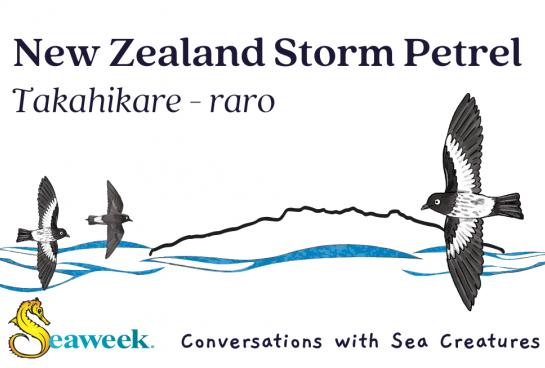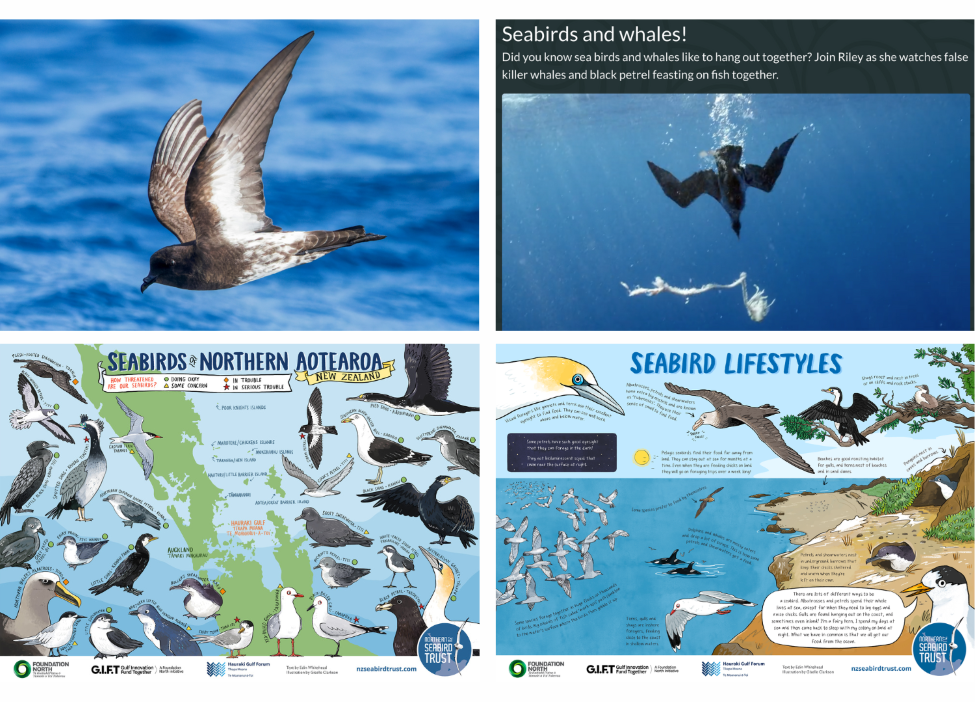
The story of the New Zealand storm petrel sheds light on the importance of our predator-free islands. Once thought to be extinct, the resilience of this tiny seabird has captured the imagination of ornithologists and nature lovers alike. Below we delve into the life of the NZ storm petrel, exploring its remarkable rediscovery and the challenges it faces.
Q: Can you tell us a little about yourself?
A: I am one of New Zealand’s smallest seabirds. Through the 20th century, we were thought to be extinct until humans rediscovered us in 2003 near the Mercury Islands. We are known for our distinctive black and white plumage and our fluttery 'moth-like' flight over the ocean waves. When we feed, we hover just above the sea with our feet skimming the surface, making it look like we are walking on water!
Q: That’s fascinating! Where do you call home?
A: We are endemic to Aotearoa New Zealand. That means we only breed here, nowhere else in the world! We are primarily found around the Hauraki Gulf and its surrounding waters. We nest on Te Hauturu-o-Toi, Little Barrier Island, in the Hauraki Gulf, in burrows and crevices in the forest. Our nests are often hidden under kie kie (a densely branched native species of woody vine), leaf litter, or amongst rocks.
Our breeding grounds were unknown for many years until a large team of humans discovered some of our nests in a valley on Hauturu. It is thought that one possible reason we managed to survive whilst rats and cats were on the island is that we nested on the steep cliffs in rock crevices and vegetation where predators couldn’t reach us.
We try not to spend too much time in the open on the forest floor and while on land at night, it’s our time to rest. We’re nocturnal so at dawn we leave our burrows quickly and fly out through the forest back to sea.
.png)
Q: How did the researchers manage to find your breeding site?
A: Scientists captured eleven of us out at sea, and carefully attached tiny radio transmitters (tags) to our central tail feathers. By following the signals from the tags, eleven birds were tracked to Hauturu. This led to the discovery of the first known breeding site when an incubating bird was detected!
Q: How do you manage to find food in such vast and open oceans?
A: We spend most of our lives at sea, enduring wild winds and rough seas. We are well adapted to withstand the challenges nature presents – but this doesn’t make finding food easy. Like all petrels, we have an amazing sense of smell and use this to locate food. We eat plankton, larval fish, and small scraps of food floating on the surface of the ocean. We might be small, but we like to eat!
Especially if we are raising a chick, we need to feed both the chick and ourselves. It takes us about 3 months to raise a chick, from laying an egg to the chick finally flying out on its own to sea. For petrel mums, growing an egg is something else! We weigh around 35 grams, but the egg weighs 8 grams. That’s a lot to fly around with!
Q: What are some of the key threats to your species, and how are they being addressed?
A: Invasive species like rats and cats are a common threat to seabird species and this is why our nesting habitat is mostly restricted to offshore islands. Fortunately, Hauturu has been free of mammalian predators since 2004. The continued biosecurity efforts of crucial refuges like Little Barrier Island are essential for our survival; we may not withstand an invasion from rats or stoats.
But while we are safe on our island, changes are happening at sea. The ocean seems to be getting warmer each year, and our food supply in the Hauraki Gulf and up in the Far North of Aotearoa could shift as temperatures increase. This means we might need to go further to find food when feeding our chicks. And that can be tough when there are more and more violent storms. We may be called storm petrels, and can ride them out if we have to, but even we are finding it tough going.
Q: What is storm petrel monitoring and research like currently?
A: When humans rediscovered us in 2003, there were rats on Hauturu and there were only 200-300 of us left. With rats eradicated, our population has rebounded and in 2015 was estimated to be in the low thousands. So, thanks humans!
Recent at-sea sightings of up to 50 New Zealand Storm Petrels at once suggests that our population is increasing. More research is currently underway to redo the estimate and find out whether our numbers are continuing to increase, or if food is scarce (harder to get) numbers could be decreasing.
Thanks to the Northern New Zealand Seabird Trust for collaborating with us to produce this interview and creature card with the most current information they have!
.png)
Download the New Zealand Storm Petrel Card to print & display
Find more creature cards & other formats in this Google Drive folder.
Additional Learning Resources
New Zealand storm petrel information (NZ Seabird Trust)
Seabirds and whales Young Ocean Explorers video
Seabirds of Northern New Zealand Poster
Seabird lifestyles poster
NNZST Seabird posters are also available in reo, explore the whole series here: view all posters
